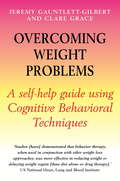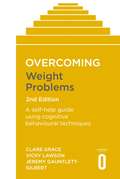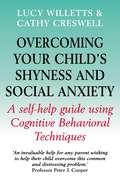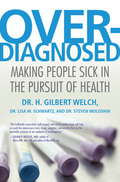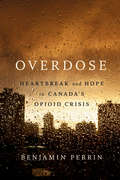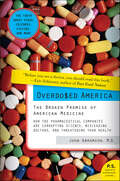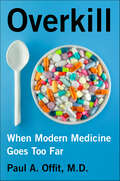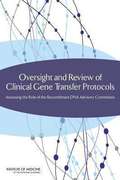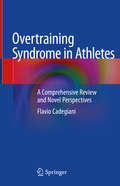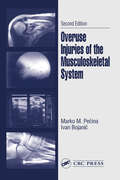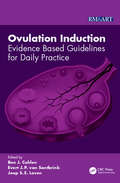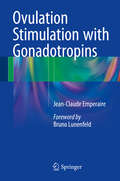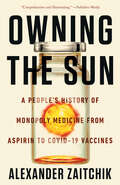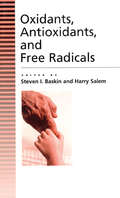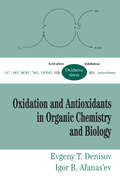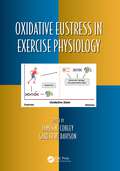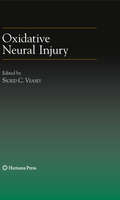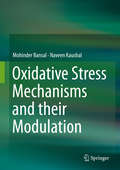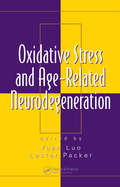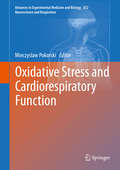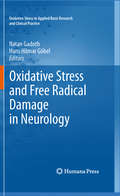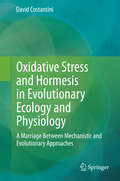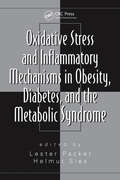- Table View
- List View
Overcoming Weight Problems
by Clare Grace Jeremy Gauntlett-GilbertFrom their ground-breaking work with CBT techniques in London's only NHS clinic for obesity, Drs Jeremy Gauntlett-Gilbert and Clare Grace have developed this accessible self-help guide, based on clinically tested methods that will help change thinking and overcome weight problems once and for all. How to:- - Develop real motivation to change - Deal with negative patterns of thinking and blocks and understand why you have gained weight and can't shift it - Develop a healthy and sustainable eating plan and understand why quick-fix diets are not the answer- Bring more activity into life over the long term - Handle difficult emotions and physical feelings
Overcoming Weight Problems 2nd Edition: A self-help guide using cognitive behavioural techniques
by Clare Grace Jeremy Gauntlett-Gilbert Vicky LawsonThis clinically tested, comprehensive course based on cognitive behavioural therapy (CBT) techniques can provide a longer-term solution to your weight problems. You'll come to understand your own psychological blocks to managing weight and discover how to sustain a healthy lifestyle. Learn how you can: - Develop the motivation to change your eating and activity- Respond to emotional eating in a helpful way- Work with the thoughts and emotions getting in the way of change- Work out a simple, healthy and sustainable eating plan that fits with your daily routine- Find easy ways to add more physical activity into your everyday lifeOvercoming self-help guides use clinically proven techniques to treat long-standing and disabling conditions, both psychological and physical. Many guides in the Overcoming series are recommended under the Reading Well scheme.Series editor: Emeritus Professor Peter Cooper
Overcoming Your Child's Shyness and Social Anxiety
by Lucy Willetts Cathy CreswellMany children are naturally shy but extreme shyness and social anxiety can become a major childhood problem, leading to avoidance of school, difficulty in making friends and even developing into social anxiety in adulthood. In Overcoming Your Child's Shyness and Social Anxiety, child psychologists Lucy Willetts and Cathy Creswell explain how parents can help a shy child learn to challenge their thoughts and behaviour patterns and learn to participate confidently in every aspect of their lives. Based on clinically proven cognitive behavioural principles, the book explains what causes shyness, how to identify social anxiety in your child (sometimes masked by anger or stubbornness) and how to gradually help your child face their anxieties and develop problem-solving strategies. This book is a must for parents, teachers and anyone working with children.
Overdiagnosed: Making People Sick in the Pursuit of Health
by H. Gilbert WelchFrom a nationally recognized expert, an exposé of the worst excesses of our zeal for medical testingGoing against the conventional wisdom reinforced by the medical establishment and Big Pharma that more screening is the best preventative medicine, Dr. Gilbert Welch builds a compelling counterargument that what we need are fewer, not more, diagnoses. Documenting the excesses of American medical practice that labels far too many of us as sick, Welch examines the social, ethical, and economic ramifications of a health-care system that unnecessarily diagnoses and treats patients, most of whom will not benefit from treatment, might be harmed by it, and would arguably be better off without screening.Drawing on twenty-five years of medical practice and research on the effects of medical testing, Welch explains in a straightforward, jargon-free style how the cutoffs for treating a person with "abnormal" test results have been drastically lowered just when technological advances have allowed us to see more and more "abnormalities," many of which will pose fewer health complications than the procedures that ostensibly cure them. Citing studies that show that 10 percent of two thousand healthy people were found to have had silent strokes, and that well over half of men over age sixty have traces of prostate cancer but no impairment, Welch reveals overdiagnosis to be rampant for numerous conditions and diseases, including diabetes, high cholesterol, osteoporosis, gallstones, abdominal aortic aneuryisms, blood clots, as well as skin, prostate, breast, and lung cancers.With genetic and prenatal screening now common, patients are being diagnosed not with disease but with "pre-disease" or for being at "high risk" of developing disease. Revealing the economic and medical forces that contribute to overdiagnosis, Welch makes a reasoned call for change that would save us from countless unneeded surgeries, excessive worry, and exorbitant costs, all while maintaining a balanced view of both the potential benefits and harms of diagnosis. Drawing on data, clinical studies, and anecdotes from his own practice, Welch builds a solid, accessible case against the belief that more screening always improves health care.
Overdose: Heartbreak and Hope in Canada's Opioid Crisis
by Benjamin Perrin&“Overdose is a necessary and searching investigation into a devastating epidemic that should never have happened. Benjamin Perrin painstakingly shows that it need not continue if we, as a society, heed the evidence.&”—Gabor Maté M.D., author of In The Realm of Hungry Ghosts: Close Encounters With AddictionAn astonishing and powerful look at the ongoing opioid crisis North America is in the middle of a health emergency. Life expectancies are declining. Someone is dying every two hours in Canada from illicit drug overdose. Fentanyl has become a looming presence—an opioid more powerful, pervasive, and deadly than any previous street drug. The victims are many—and often not whom we might expect. They include the poor and forgotten but also our neighbours: professionals, students, and parents. Despite the thousands of deaths, these victims have remained largely invisible. But not anymore. Benjamin Perrin, a law and policy expert, shines a light in this darkest of corners—and his findings challenge many assumptions about the crisis. Why do people use drugs despite the risk of overdosing? Can we crack down on the fentanyl supply? Do supervised consumption sites and providing &“safe drugs&” enable the problem? Which treatments work? Would decriminalizing all drugs help or do further harm? In this urgent and humane look at a devastating epidemic, Perrin draws on behind-the-scenes interviews with those on the frontlines, including undercover police officers, intelligence analysts, border agents, prosecutors, healthcare professionals, Indigenous organizations, activists, and people who use drugs. Not only does he unveil the many complexities of this situation, but he also offers a new way forward—one that may save thousands of lives.
Overdosed America: The Broken Promise of American Medicine
by John Abramson“Overdosed America reveals the greed and corruption that drive health care costs skyward and now threaten the public health. Before you see a doctor, you should read this book.” —Eric Schlosser, author of Fast Food NationUsing the examples of Vioxx, Celebrex, cholesterol-lowering statin drugs, and anti-depressants, Overdosed America shows that at the heart of the current crisis in American medicine lies the commercialization of medical knowledge itselfFor twenty years, John Abramson, M.D., cared for patients of all ages in a small town north of Boston. But increasingly his role as family doctor was undermined as pressure mounted to use the latest drugs and high-tech solutions for nearly every problem. Drawing on his background in statistics and health policy research, he began to investigate the radical changes that were quietly taking place in American medicine.At the heart of the crisis, he found, lies the changed purpose of medical knowledge—from seeking to optimize health to searching for the greatest profits. The lack of transparency that has become normal in commercially sponsored medical research now taints the scientific evidence published in even our most prestigious medical journals. And unlike the recent scandals in other industries that robbed Americans of money and jobs, this one is undermining our health.Commercial distortion pervades the information that doctors rely upon to guide the prevention and treatment of common health problems, from heart disease to stroke, osteoporosis, diabetes, and osteoarthritis. The good news, as Dr. Abramson explains, is that the real scientific evidence shows that many of the things that you can do to protect and preserve your own health are far more effective than what the drug companies' top-selling products can do for you—which is why the drug companies work so hard to keep this information under wraps.In what is sure to be one of the most important and eye-opening books you or your doctor will ever read, John Abramson offers conclusive evidence that American medicine has broken its promise to best improve our health and is squandering more than $500 billion each year in the process.
Overkill: When Modern Medicine Goes Too Far
by Paul A. OffitA look at fifteen popular medical treatments that have been shown to be far more harmful than helpful, yet are still recommended by doctors.Modern medicine has made major advances in the last few decades, as more informed practices, thorough research, and incredible breakthroughs have made it possible to successfully treat and even eradicate many serious ailments. But we still rely on medical interventions that are vastly out of date and can adversely affect our health. In Overkill, Dr. Paul a Offit debunks fifteen common medical interventions that continue despite mounting evidence they are damaging or even deadly. Discussing everything from vitamins, sunscreen, and eyedrops for pinkeye to more serious procedures like heart stent placement and knee surgery, Offit—an acclaimed medical expert and patient advocate—tears down prolific medical propaganda that, for decades, has been causing more harm than good.Analyzing the history of how these practices came to be, the biology of what makes them so ineffective, and the medical culture that has consistently turned a blind eye, Overkill seeks to move the needle far away from these counterproductive treatments—and help patients advocate for their health. By educating ourselves, we can ask better questions and bring a much-needed skepticism to some of the drugs and surgeries that are too readily available—and too heavily promoted.
Oversight and Review of Clinical Gene Transfer Protocols
by Institute of Medicine Lawrence O. Gostin Bruce M. Altevogt Board on Health Sciences Policy Rebecca N. Koehler Committee on the Independent Review and Assessment of the Activities of the NIH Recombinant DNA Advisory CommitteeGene transfer research is a rapidly advancing field that involves the introduction of a genetic sequence into a human subject for research or diagnostic purposes. Clinical gene transfer trials are subject to regulation by the U.S. Food and Drug Administration (FDA) at the federal level and to oversight by institutional review boards (IRBs) and institutional biosafety committees (IBCs) at the local level before human subjects can be enrolled. In addition, at present all researchers and institutions funded by the National Institutes of Health (NIH) are required by NIH guidelines to submit human gene transfer protocols for advisory review by the NIH Recombinant DNA Advisory Committee (RAC). Some protocols are then selected for individual review and public discussion. Oversight and Review of Clinical Gene Transfer Protocols provides an assessment of the state of existing gene transfer science and the current regulatory and policy context under which research is investigated. This report assesses whether the current oversight of individual gene transfer protocols by the RAC continues to be necessary and offers recommendations concerning the criteria the NIH should employ to determine whether individual protocols should receive public review. The focus of this report is on the standards the RAC and NIH should use in exercising its oversight function. Oversight and Review of Clinical Gene Transfer Protocols will assist not only the RAC, but also research institutions and the general public with respect to utilizing and improving existing oversight processes.
Overtraining Syndrome in Athletes: A Comprehensive Review and Novel Perspectives
by Flavio CadegianiThis book discusses major changes in our understanding of the most prevalent non-orthopedic, sports-related condition – overtraining syndrome (OTS), arguing that it should be considered as the manifestation of burnout in athletes, rather than simply the result of excessive training. While the chronic adaptations of the cardiovascular and musculoskeletal systems to exercise are well documented, those of the endocrine system are less well known, and adaptations of the hormonal ranges for athletes are yet to be determined. There is also a lack of standardized diagnostic criteria, consistent assessment methods and biomarkers. This book offers a systematic review of the hormonal aspects of overtraining syndrome, and a comparison with sports-related syndromes triggered by chronic deprivation of different sorts, including the female athlete triad (and its derivative, RED-S) and burnout syndrome of the athlete (BSA). It demonstrates that these conditions, although studied separately from each other, may all be different manifestations of the same condition, leading to ‘maladaptive’ (dysfunctional forced adaptations to a hostile environment) changes in response to chronic depletion of energy and mechanisms of repair, causing multiple dysfunctions. The author proposes that OTS/Paradoxical Deconditioning Syndrome (PDS), RED-S/TRIAD and BSA are parts of a same condition, or at least a group of similar conditions. Further, the book offers a chronological overview of OTS, based on preliminary research. Given its broad scope, this concise reference book will appeal to a range of health professionals. It allows readers, including those without a strong academic background, to gain a systematic understanding of OTS.
Overuse Injuries of the Musculoskeletal System
by Marko M. Pecina Ivan BojanicOveruse injuries of the musculoskeletal system are common occurrences. Yet most existing volumes on cumulative trauma disorders deal with the subject from an ergonomic and occupational therapy standpoint, and do not provide the all-encompassing synopsis that physicians demand.Overuse Injuries of the Musculoskeletal System, Second Edition, answers t
Ovulation Induction and Controlled Ovarian Stimulation
by Roy HomburgOvulation induction and controlled ovarian stimulation lie at the very heart of treatment for infertility, but have been subject to a bewildering variety of variations and improvements over recent years. The Second Edition of this highly successful book updates the reader on the progress and developments in this area. Furthermore, it provides the busy clinician with a reliable overview of the principles involved and the management needed. As with the previous edition, the emphasis throughout this book is on logical evidence and evidence-based solutions supplemented with Professor Homburg's extensive clinical experience gleaned from more than forty years working in the field. A number of highly useful algorithms and explanatory tables reinforce this approach, ensuring that the reader is presented with easy-to-grasp, well-presented information that maximizes clarity and understanding This book offers a concise, no-nonsense, practical guide to ovulation induction and controlled ovarian stimulation and will be an essential resource for the general gynaecologists, fertility specialists and trainees, health workers and students.
Ovulation Induction: Evidence Based Guidelines for Daily Practice (Reproductive Medicine and Assisted Reproductive Techniques Series)
by Ben J. Cohlen, Evert J. P. van Santbrink and Joop S. E. LavenAnovulation – one of the most common causes of infertility – is here given a thorough review, with classification of the different subtypes, how they are diagnosed, how they are treated, and the possible complications and outcomes involved. This is a comprehensive evidence-based summary from an international expert team, with guidelines for daily practice clearly stated and summarized for your convenience.
Ovulation Stimulation with Gonadotropins
by Jean-Claude EmperaireHow does one learn to stimulate ovulation? Often by oneself, when there is no opportunity to benefit from a mentor's experience. But options abound regarding the evaluation strategy, protocol design, gonadotropin preparations, posology, treatment duration, and when and how to trigger ovulation. Proper, safe stimulation requires critical anticipation of ovarian reactions. There seems to be little evidence-based consensus in the field of ovarian stimulation. Though they all face the same situation, there seem to be nearly as many procedures as there are clinicians in the field; as a result, approaches may vary within a given fertility center or even in the same team. Even though efforts have been made to arrive at a general consensus, the basic guidelines are often reinterpreted according to individual inclinations; hence the need to turn to experience-based decisions. This book is based on the author's experience gathered over forty years and more than 30,000 cycles of classical and IVF ovulation stimulations, particularly the thousand most recent cycles that resulted in a clinical pregnancy. It is not intended as a "perfect solution", as other approaches certainly remain valid. Rather, the book presents the author's own analysis and insights gained from managing thousands of stimulation cycles.
Owning the Sun: A People's History of Monopoly Medicine from Aspirin to COVID-19 Vaccines
by Alexander ZaitchikFor readers of Bad Blood and Empire of Pain, an authoritative look at monopoly medicine from the dawn of patents through the race for COVID-19 vaccines and how the privatization of public science has prioritized profits over peopleOwning the Sun tells the story of one of the most contentious fights in human history: the legal right to produce lifesaving medicines. Medical science began as a discipline geared toward the betterment of all human life, but the merging of research with intellectual property and the rise of the pharmaceutical industry warped and eventually undermined its ethical foundations. Since World War II, federally funded research has facilitated most major medical breakthroughs, yet these drugs are often wholly controlled by price-gouging corporations with growing international ambitions. Why does the U.S. government fund the development of medical science in the name of the public only to relinquish exclusive rights to drug companies, and how does such a system impoverish us, weaken our responses to crises, and, as in the cases of AIDS and COVID-19, put the world at risk? Outlining how generations of public health and science advocates have attempted to hold the line against Big Pharma and their allies in government, Alexander Zaitchik&’s first-of-its-kind history documents the rise of privatized medicine in the United States and its subsequent globalization. From the controversial arrival of patent-wielding German drug firms in the late nineteenth century to present-day coordination between industry and philanthropic organizations—including the influential Bill & Melinda Gates Foundation—that stymie international efforts to vaccinate the world against COVID-19, Owning the Sun tells one of the most important and least understood histories of our time.
Oxidants, Antioxidants And Free Radicals
by Steven I. Baskin and Harry SalemThis volume collates articles investigating antioxidant, oxidant and free radical research. It examines the role of such research in health and disease, particulary with respect to developing greater understanding about the many interactions between oxidants and antioxidants, and how such substances may act as natural protectants and /or natural toxicants.
Oxidation and Antioxidants in Organic Chemistry and Biology
by Igor B. Afanas'ev Evgeny T. DenisovProviding a comprehensive review of reactions of oxidation for different classes of organic compounds and polymers, and biological processes mediated by free radicals, Oxidation and Antioxidants in Organic Chemistry and Biology puts the data and bibliographical information you need into one easy-to-use resource. You will find up-to-date information
Oxidative Eustress in Exercise Physiology (Oxidative Stress and Disease #47)
by James N. CobleyOxidative Eustress in Exercise Physiology unravels key physiological responses and adaptations to different redox-regulated exercise paradigms at the cell, tissue, and whole-body level in model systems and humans in health and disease. While the mechanistic details are still unclear, key intracellular redox indices seem to be dysregulated with age. Consequently, beneficial molecular responses to acute endurance exercise decline in older individuals. Recent research suggests that manipulating mitochondrial redox homeostasis by supplementing with the mitochondria-targeted coenzyme Q10 for six weeks markedly improves physical function in older adults; i.e. it may be possible to maximise the benefits of exercise by manipulating the redox environment. The research described in this book suggests that significant translational potential exists with respect to cardiovascular disease, neurodegeneration and cancer. An international team of researchers documents the importance of redox biology in health and disease, especially when exercise is a clinically useful tool for the treatment of many diseases and conditions. Features Defines essential redox biology reactions and concepts in exercise physiology Assesses key redox parameters in an in vivo human exercise context Identifies the challenges, opportunities and boundaries of current knowledge Includes a critique of the underlying mechanisms Summarises examples of translationally important research relating to disease states Related Titles Draper, N. & H. Marshall. Exercise Physiology for Health and Sports Performance (ISBN 978-0-2737-7872-1) Wackerhage, H., ed. Molecular Exercise Physiology: An Introduction (ISBN 978-0-4156-0788-9)
Oxidative Neural Injury
by Sigrid C. VeaseyThis book examines the current evidence and research supporting the importance of oxidative injury in selected animal models of both neurodegenerative diseases and neural injury. Each chapter discusses oxidative injury in a selected model, analyzing the major cellular mechanisms that underpin the progression of neural injury. In addition to the analysis of these models, each chapter's purpose is to not only relate, but to also contrast the specific injury across models as a way of identifying the common and unique pathways of oxidative neural injury. Through this, each author presents possible fertile future directions for translational research for the identification of possible therapeutics.
Oxidative Stress Mechanisms and their Modulation
by Mohinder Bansal Naveen KaushalResearch over the years has demonstrated that free radicals mediated oxidative stress lies at the helm of almost all patho-physiological phenomena. These findings emphasize on the need to understand the underlying molecular mechanism(s) and their critical role in the pathogenesis. This book aims to focus on these areas to provide readers a comprehensive outlook about the major redox sensitive pathways and networks involved in various disease conditions. In the first chapter of the book, basic information about the oxidative stress, its generation, its biomarkers and its role in body are discussed. In the next three chapters, the role of oxidative stress in various pathologies ranging from neurological disorders, to cardiovascular diseases, cancers, metabolic diseases and ageing have been described. Chapter 5 cumulatively describes the most important molecular signaling pathways that are affected by reactive oxygen species (ROS). These are the mechanisms which are common denominators in various pathological states. In the next part of the book, various antioxidant strategies to target and mitigate ROS have been discussed with details on the mechanisms. Selenium, being the research focus and interest of the authors for years, the role of selenium as an antioxidant as part of selenoproteins has been included in the book. Finally, the book culminates with authors' perspective on the future of the redox biology field. Throughout the book, efforts have been made to use simplified language and suitable figures for ease to understand the contents. Although the authors have tried to touch on all the different aspects of oxidative stress in detail, the fact that it is a continuously growing field with updates coming every day, there might be some areas which might not be described in depth. This book is designed for students, young scientists to get acquainted with the redox biology. Overall, this book is a reference to understand the redox regulation of cellular signaling pathways involved in pathogenesis.
Oxidative Stress and Age-Related Neurodegeneration (Oxidative Stress and Disease)
by Yuan Luo Lester PackerOxidative Stress and Age-Related Neurodegeneration brings together researchers from a variety of fields to compare normal aging and disease-related neurodegeneration in terms of susceptibility to and effects of oxidative stress. They address how these effects can be attenuated, and examine whether antioxidants and natural micronutrients, such as those found in Gingko biloba, green tea, blueberries, and grape seed extract, can play a role. The book includes various ways research is getting to the core of neurodegenerative disease, including the use of proteomics, comparisons to related diseases, and examinations at the cellular and molecular levels.
Oxidative Stress and Cardiorespiratory Function
by Mieczyslaw PokorskiCardiorespiratory function is prominently affected by oxidative stress. Cigarette smoking is the archetype of oxidative and nitrative stress and free radical formation. New adverse effects of smoking keep on propping up in research. The chapters provide the comprehensive view of new developments in this area regarding cardiovascular and lung function and muscle catabolism. Alterations in inflammatory cytokines and proteins as well as degradation of muscle proteins due to smoking, by far unrecognized, caused by oxidative stress also are presented. Much less is known about the effect of cognitive stress on vagally-mediated cardiorespiratory function and surprisingly, on vagal immune pathway. The experimental studies also show that clinically important meconium aspiration syndrome contains an oxidative trait which is amenable to antioxidative treatment. This volume creates a source of information on the damaging role of oxidative stress in cardiorespiratory function that has by far not been available.
Oxidative Stress and Free Radical Damage in Neurology
by Natan Gadoth Hans Hilmar GöbelThe role of free radicals and oxidative stress in neurological disorders has only recently been recognized, leaving clinical neurologists to seek in vain for information on the subject even in major textbooks. What published information there is may consist of brief reminders of the possible association of superoxidase dismutase with familial amyotrophic lateral sclerosis and nitrous oxide with migraine. With luck they may also find information on the purported role of free radicals in the pathogenesis of traumatic brain injury. Oxidative Stress and Free Radical Damage in Neurology sets the record straight, focusing on clinical and research issues regarding the interplay of free radicals and the human nervous system. Crucially, the chapters cover numerous antioxidants and their possible therapeutic role in neurological disorders. Key illnesses such as epilepsy, multiple sclerosis and Parkinson's are analyzed, and chapters also examine more general issues such as the link between free radicals and inflammation of the central nervous system. Clinicians and laboratory researchers alike will find that this book augments their understanding not only of the widespread involvement of free radicals in the central nervous system but also of some uncertainties surrounding whether free radical damage in neurology plays a primary or secondary role.
Oxidative Stress and Hormesis in Evolutionary Ecology and Physiology
by David CostantiniThis book discusses oxidative stress and hormesis from the perspective of an evolutionary ecologist or physiologist. In the first of ten chapters, general historical information, definitions, and background of research on oxidative stress physiology, hormesis, and life history are provided. Chapters 2-10 highlight the different solutions that organisms have evolved to cope with the oxidative threats posed by their environments and lifestyles. The author illustrates how oxidative stress and hormesis have shaped diversity in organism life-histories, behavioral profiles, morphological phenotypes, and aging mechanisms. The book offers fascinating insights into how organisms work and how they evolve to sustain their physiological functions under a vast array of environmental conditions.
Oxidative Stress and Inflammation in Non-communicable Diseases - Molecular Mechanisms and Perspectives in Therapeutics
by Jordi CampsOxidative stress and inflammation underpin most diseases; their mechanisms are inextricably linked. For example, chronic inflammation is associated with oxidation, anti-inflammatory cascades are linked to decreased oxidation, increased oxidative stress triggers inflammation and redox balance inhibits the inflammatory cellular response. Whether or not oxidative stress and inflammation represent the causes or the consequences of cellular pathology, they contribute significantly to the pathogenesis of non-communicable diseases. The incidence of obesity and other related metabolic disturbances are rising, as are age-related diseases due to progressively aging populations. Interrelations between the mechanisms of oxidative stress and of inflammatory signaling and metabolism are, in the broad sense of energy transformation, being increasingly recognized as part of the problem in non-communicable diseases. The book Oxidative Stress and Inflammation in Non-communicable Diseases: Molecular Mechanisms and Perspectives in Therapeutics is an update on the latest research on the molecular basis of non-communicable diseases and the search for possible therapeutic alternatives. The authors of this monograph are experts in their field and the book as a whole, provides an overview of the biochemical alterations underlying diseases such as cardiovascular disease, cancer, obesity, renal disease, neurological diseases and diabetes, emphasizing those aspects that they share in common. We hope that this book will be useful for researchers in biomedicine and also for physicians interested in finding the root causes of the disease, as well as for post-graduate students in biochemistry, molecular biology, nutrition or medicine.
Oxidative Stress and Inflammatory Mechanisms in Obesity, Diabetes, and the Metabolic Syndrome
by Helmut Sies Lester PackerCharacterized by obesity, insulin resistance, dyslipidemia, and hypertension, metabolic syndrome is associated with the risks of type 2 diabetes mellitus and cardiovascular disease. Obesity, which increases the incidence of atherosclerotic cardiovascular disease and subsequently leads to increased stress and inflammation, appears to play a central
